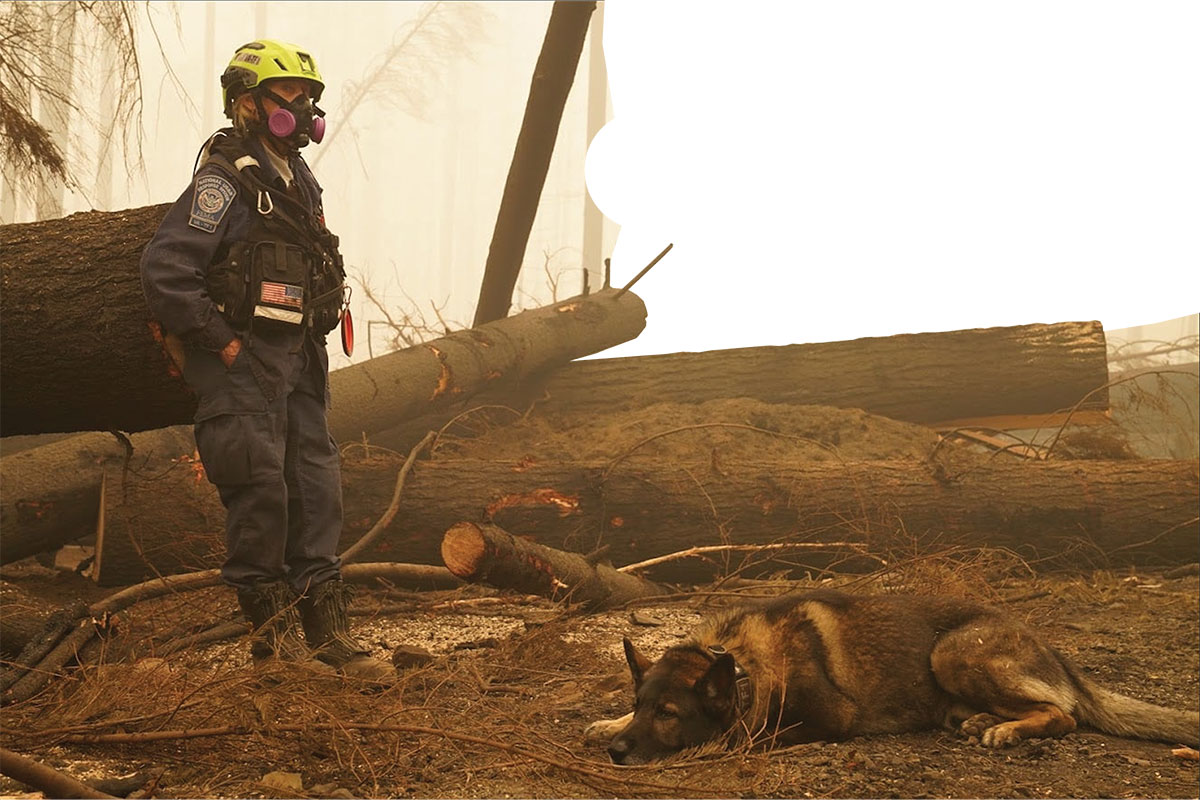Jeff Lewis was a freshman at George Mason University in 1986 when a moment of helplessness led him to his life’s calling. Driving home from class, he was one of the first to stop at the scene of a car accident where he found four seriously injured teenagers. Two boys had been ejected, and two girls remained belted inside the vehicle. “I just stood there frozen, with no idea what to do. Nothing. At that moment, I reexamined my entire life,” says Lewis.
Another car also stopped, from which a uniformed Boy Scout and his father immediately sprang into action and applied first aid. “Here I was, a college student with no particular direction in life, completely shown up by a 12-year-old,” says Lewis. “Then the local fire department arrived, and within minutes they turned chaos into order and got all of the patients to definitive medical care. All I could think about driving home was that I had discovered what I wanted to do, so I turned that desire into a lifelong career that first began as a volunteer firefighter. I’ve been involved with public safety from that day and never looked back.”
Fast forward 37 years, and Lewis is the program manager of one of the most elite urban search and rescue teams in the world. Lewis, a battalion chief with the Fairfax County Fire and Rescue Department, has been with its USAR program since 1998. “It’s a passion that has allowed me to experience every superlative, all the zeniths and nadirs, in my career.”
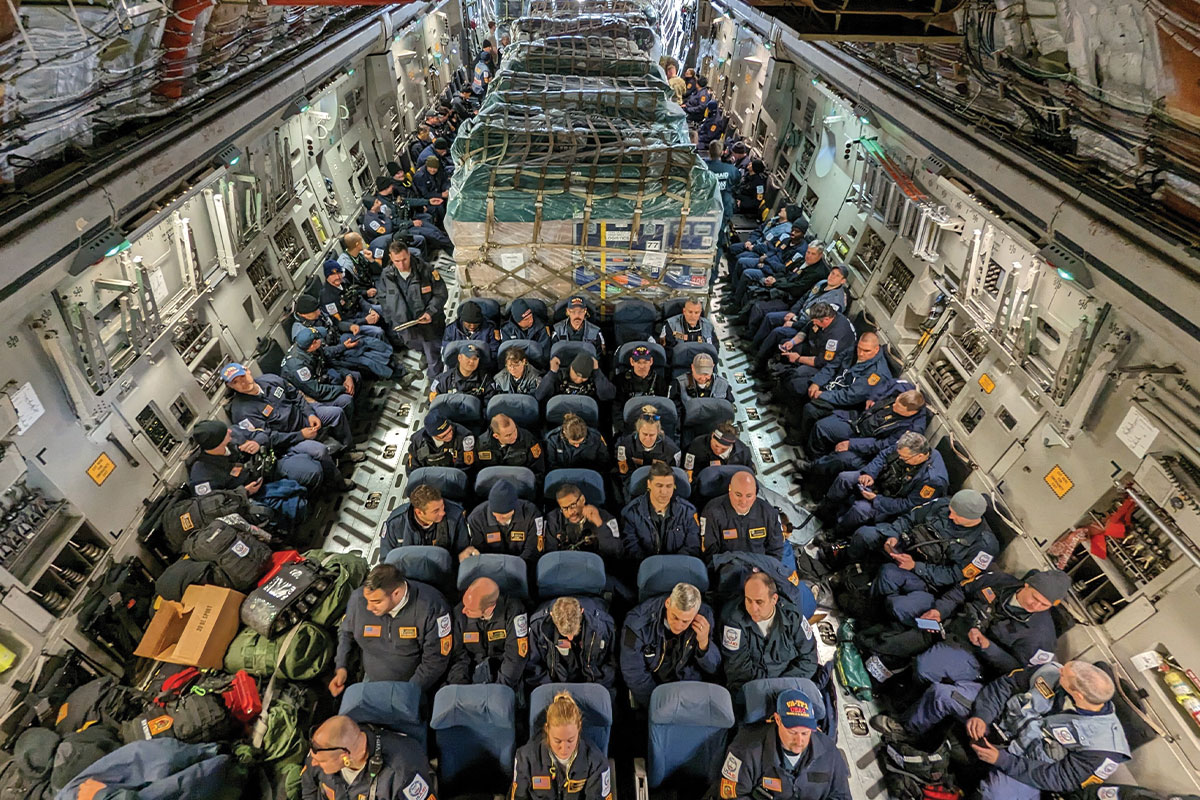
A World-Class Team
Established in 1986, Fairfax County Fire and Rescue’s USAR program maintains a roster of about 200 experts devoted to achieving the seemingly impossible: rescuing victims trapped inside collapsed structures following catastrophic events. When activated, the team consists mostly of career and volunteer Fairfax County Fire and Rescue personnel, along with select civilian physicians, canine handlers, and structural engineers.
Fairfax County’s USAR program has deployed on 134 missions and has responded to the most devastating natural- and human-caused disasters. From the 2001 terrorist attack on the Pentagon to Hurricane Katrina in Mississippi and Louisiana in 2005 to the 2010 earthquake in Haiti to the 2011 earthquake in Japan, team members have aided victims across the globe.
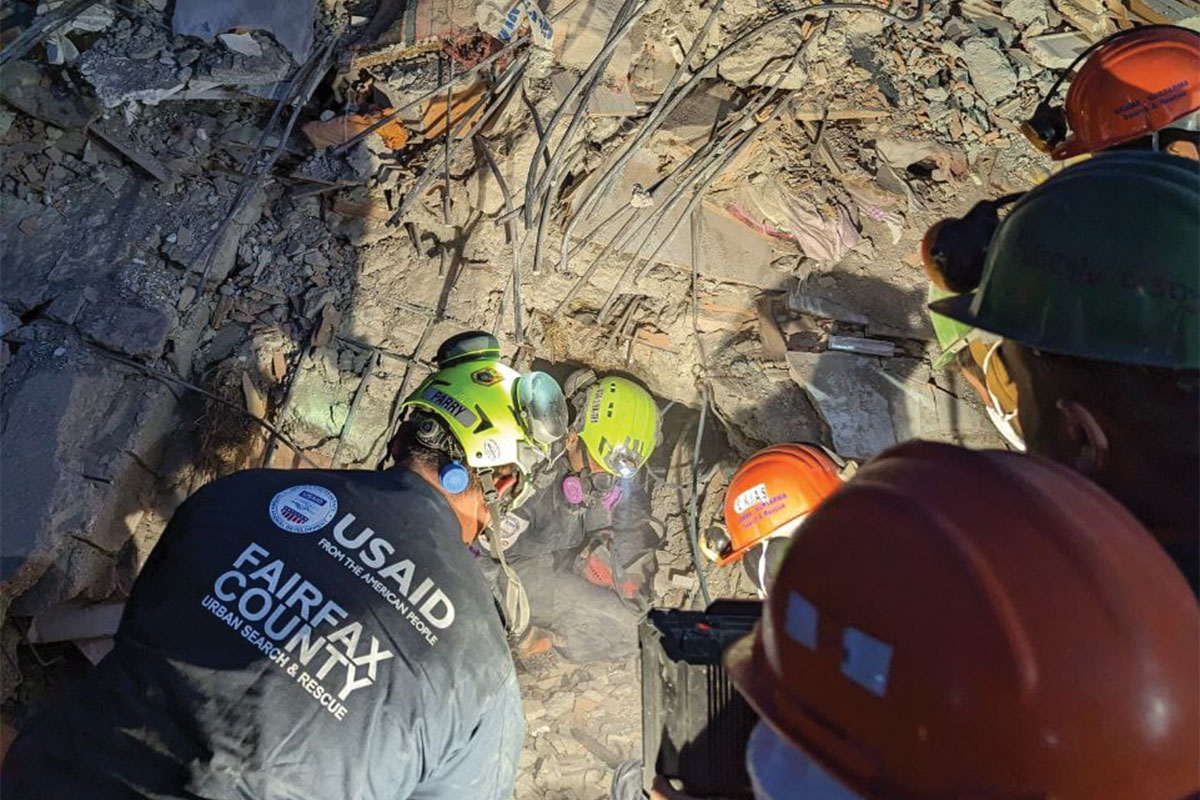
The program’s name changes depending on which of two federal partners initiates the deployment. When deployed domestically by the Federal Emergency Management Agency, the team is called Virginia Task Force 1. When deployed internationally by the United States Agency for International Development, the team is called USA-01. In all cases, related expenses are covered by the federal government, not Fairfax County.
Of the 28 federally sponsored USAR teams in the U.S., only two — Fairfax County and Los Angeles County — have contracts with USAID to deploy internationally. “Fairfax County has obtained one of the two available spots every time there has been a solicitation. It’s a competitive process, and in my biased but qualified opinion, the Fairfax County USAR program is one of the best, if not the best, in existence,” says Lewis.
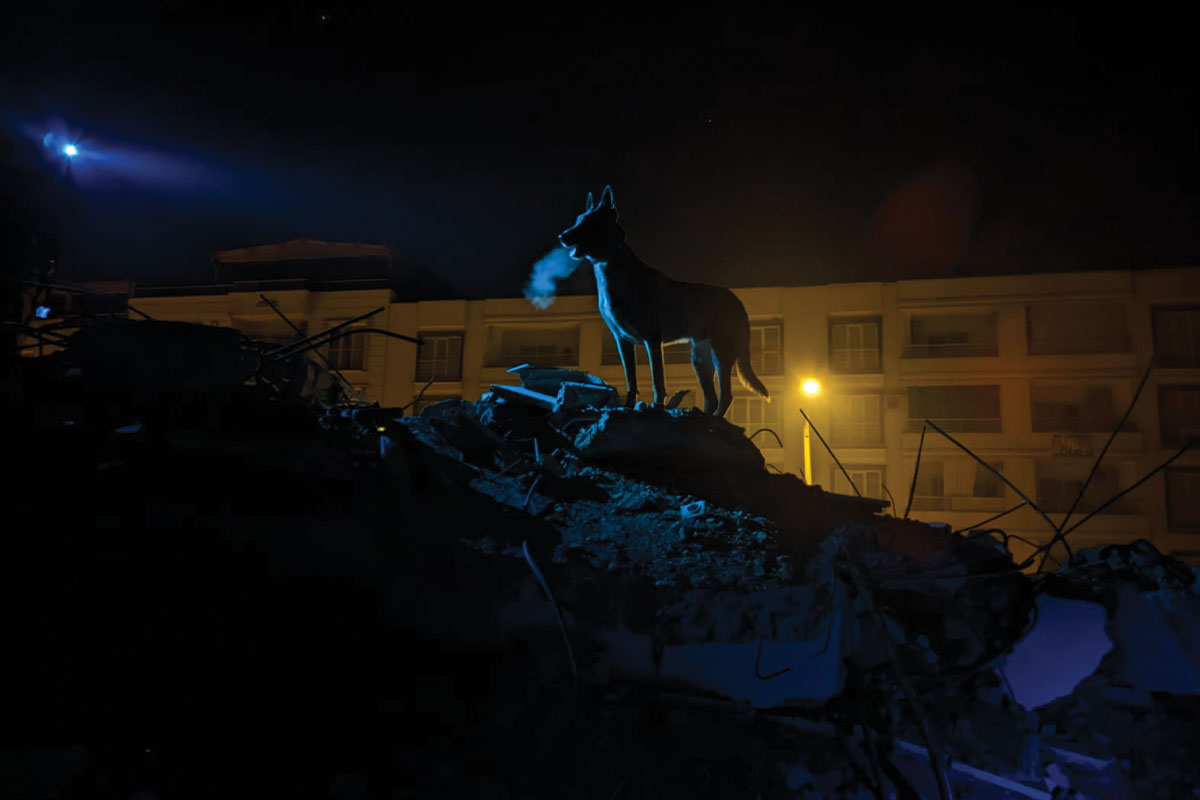
Tragedy in Turkey
On February 6, 2023, a 7.8-magnitude earthquake rocked the border of Turkey and Syria, damaging or destroying about 240,000 buildings and ultimately killing more than 54,000 people and displacing over 2.7 million, according to USAID.
“I got an earthquake alert on my cell phone, and as soon as I saw it was in a population-dense part of Turkey, I knew there was a high likelihood we were going,” says Lewis. “So I opened my computer and started the planning process to get our team out the door even before the official order arrived.” Within hours, USAID activated USA-01 as a USAR team consisting of 79 members and six dogs.
The morning after wrapping up the team’s mobilization, Lewis reported to USAID headquarters in Washington, DC, as part of a USAID Response Management Team. The rest of his team geared up with 70,000 pounds of equipment on a fully packed U.S. Air Force C-17 for a February 7 flight out of Dover Air Force Base, to return on February 21.
VA-TF1/USA-01 keeps two full caches of equipment, ranging from basecamp supplies and vehicles to medical gear and construction tools, on continuous standby at a warehouse in Chantilly. “We have two federal partners, so we maintain the ability to field two large teams simultaneously, and we have done that — most notably with the Haiti earthquake response in 2010,” says Lewis.
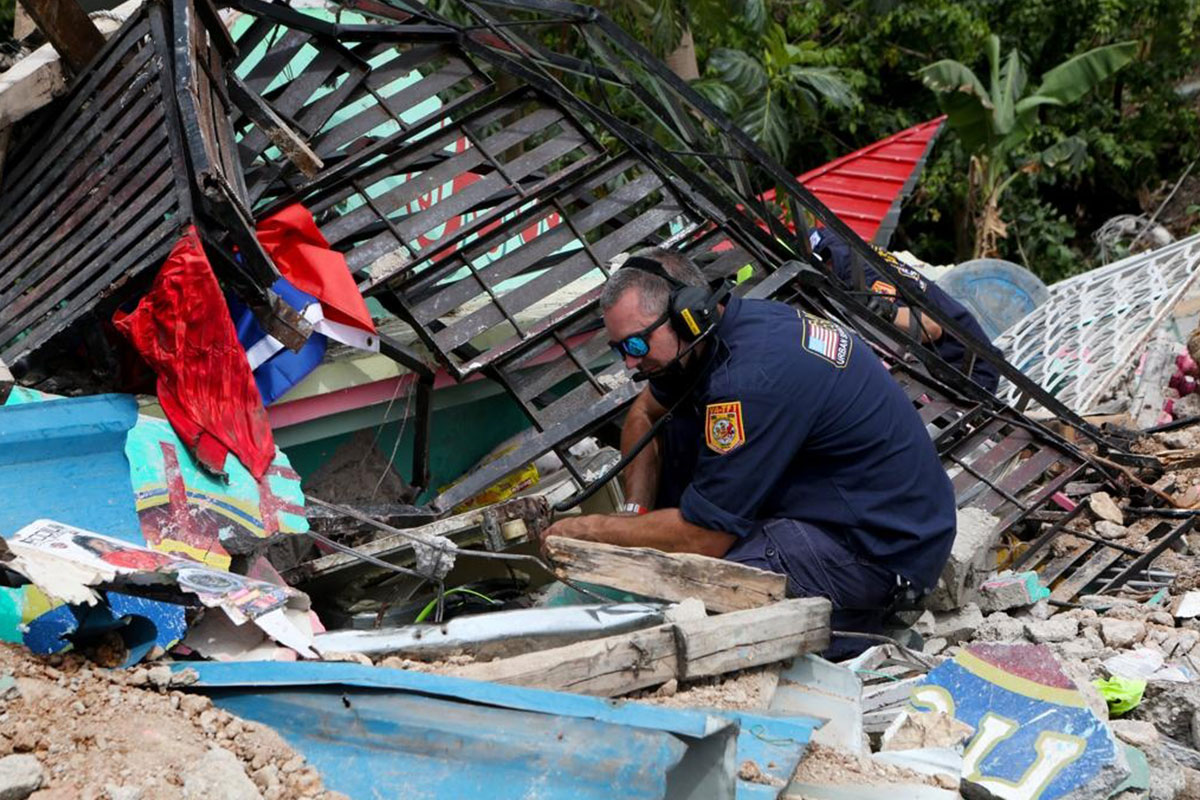
‘If You Can Hear Me, Tap Twice’
As soon as a USAR team hits the ground, things move quickly. “We interface with the entity in charge and then immediately send a reconnaissance element out and construct a basecamp simultaneously,” says Lewis. “Once we receive information back from reconnaissance, we begin sending rescue squads. Usually, survivors in the community have already achieved a tremendous number of rescues before we arrive, so our mission is to rescue the people no one else can get out.”
Canine specialists run dogs trained to identify the slightest scent of human life, while rescuers employ remote listening equipment and specialized cameras and speakers. “Our seismic sensors look like a bunch of soup cans, albeit extraordinarily expensive and sensitive soup cans, on a string. When we extend them into a collapsed structure, if someone on the other side of the building just scratches something with their fingernail, you will hear it on the device,” says Lewis. “We do something called hailing, or calling out, and I still remember the words we used from my deployment to Izmit in 1999: ‘If you can hear me, tap twice,’ which we repeated in Turkish over and over in search of life.”
Lewis compares a rescue to cutting a pie into smaller and smaller slices: The team makes its way from a city to a community to a building and finally into a room, where they can begin tunneling to reach a victim. “Whatever kinds of construction materials you can imagine, we can defeat. There’s a whole science to it, but we can cut through thick concrete slabs, reinforcing [bars], structural steel, iron. If we know someone is in there, we are going to get them out.”
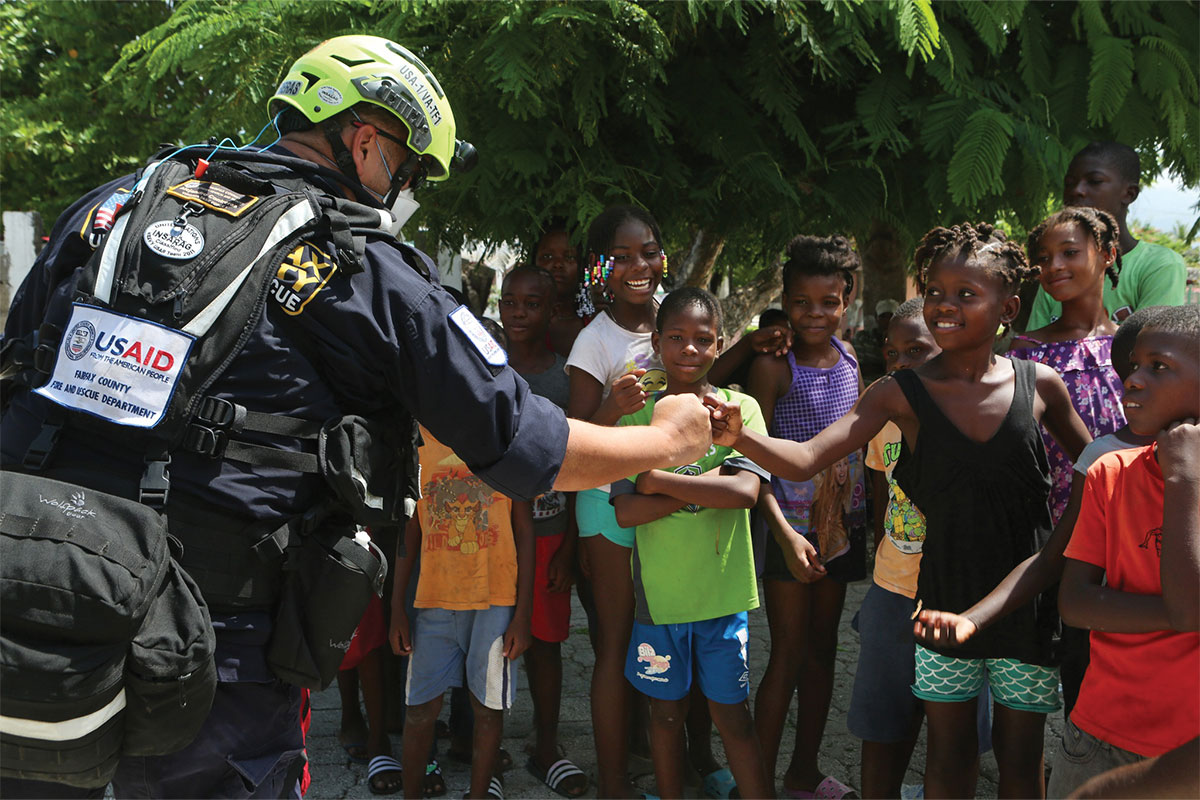
Pancake Collapses
Eddie Thurston, a master technician at Fairfax County’s Great Falls Fire Station, has served as a rescue and medical specialist on the USAR team for 15 years. He’s been on 10 deployments, including Haiti, Japan, Nepal, and, most recently, Turkey.
According to the United Nations, the team faced more than 230 million tons of debris when it arrived in Turkey. “The magnitude of damage was unbelievable,” says Thurston. “We saw a lot of pancake collapses, where buildings completely fell in on themselves, and many of those buildings were four, eight, 10 stories high. When we triage a building, we look for voids where people might survive, but pancake collapses are bad because there are few or no voids.”
Considering that a square foot of concrete weighs about 150 pounds, Thurston says that voids are a big factor in survivability. “But if we hear something or a dog makes a hit, we will search any building if we think there’s a survivor,” he says. “In this kind of response, we treat a lot of people suffering from a serious condition called crush syndrome, where the big muscles have been compressed with concrete.”
Thurston says the mission to Haiti stands out in his memory because of the sheer number of rescues. “To help someone survive, to see their eyes when we free them from an environment where they have been trapped, is an incredible thing.”
A Catalyzing Image
Robert Schoenberger, captain at Fairfax County’s Fair Oaks Fire Station, was a teenager when he saw a photo that sparked his career path. “I was about to graduate from high school when the [Alfred P.] Murrah Federal Building in Oklahoma City was bombed,” says Schoenberger. “I saw a photo of a firefighter carrying an injured child, and that image just stuck forever in my mind and set me on the path to becoming a paramedic and firefighter.” The child in the photo died of her injuries, and the image has become an iconic reminder of the April 19, 1995, tragedy.
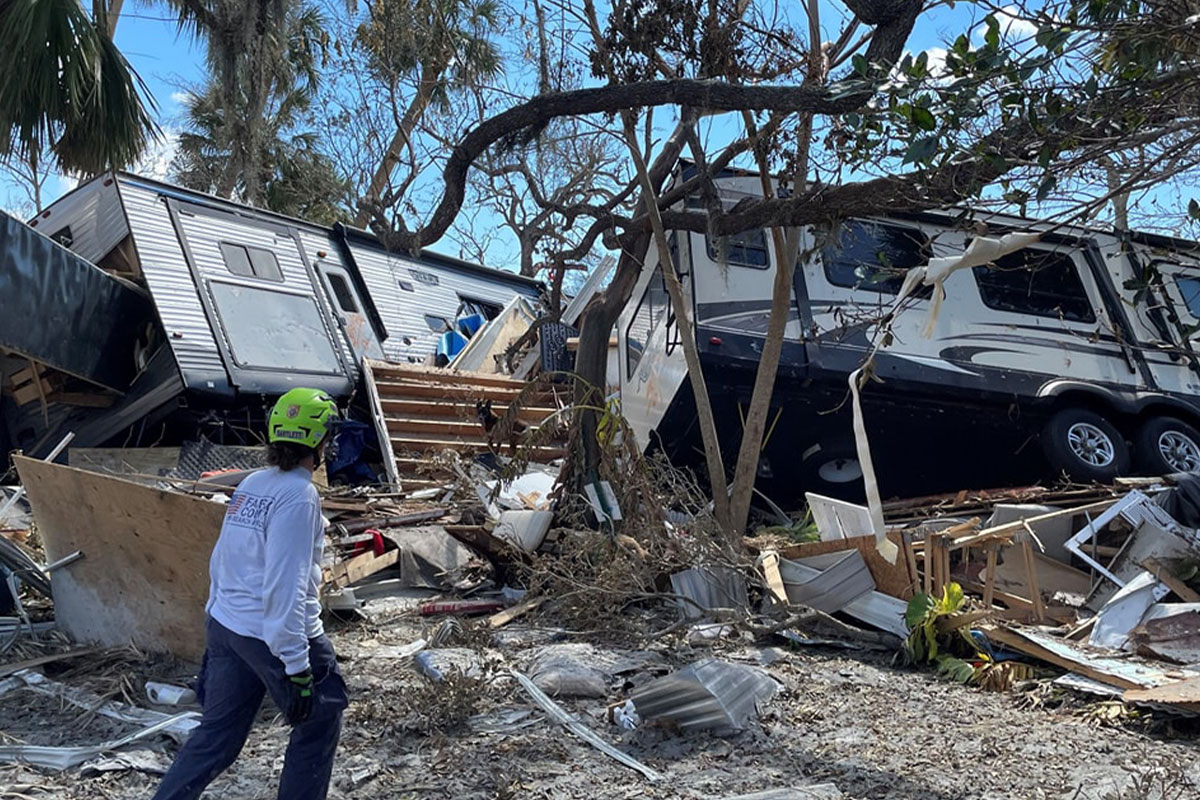
Schoenberger has been a rescue and medical specialist with the Fairfax County team for 15 years. In various roles, he’s been on multiple domestic and international deployments, most recently to Turkey.
Like Thurston, Schoenberger remembers Haiti well. “We were dealing with so many people who were trapped in rubble for long periods of time, and some didn’t make it out. Those people never leave your mind,” he says.
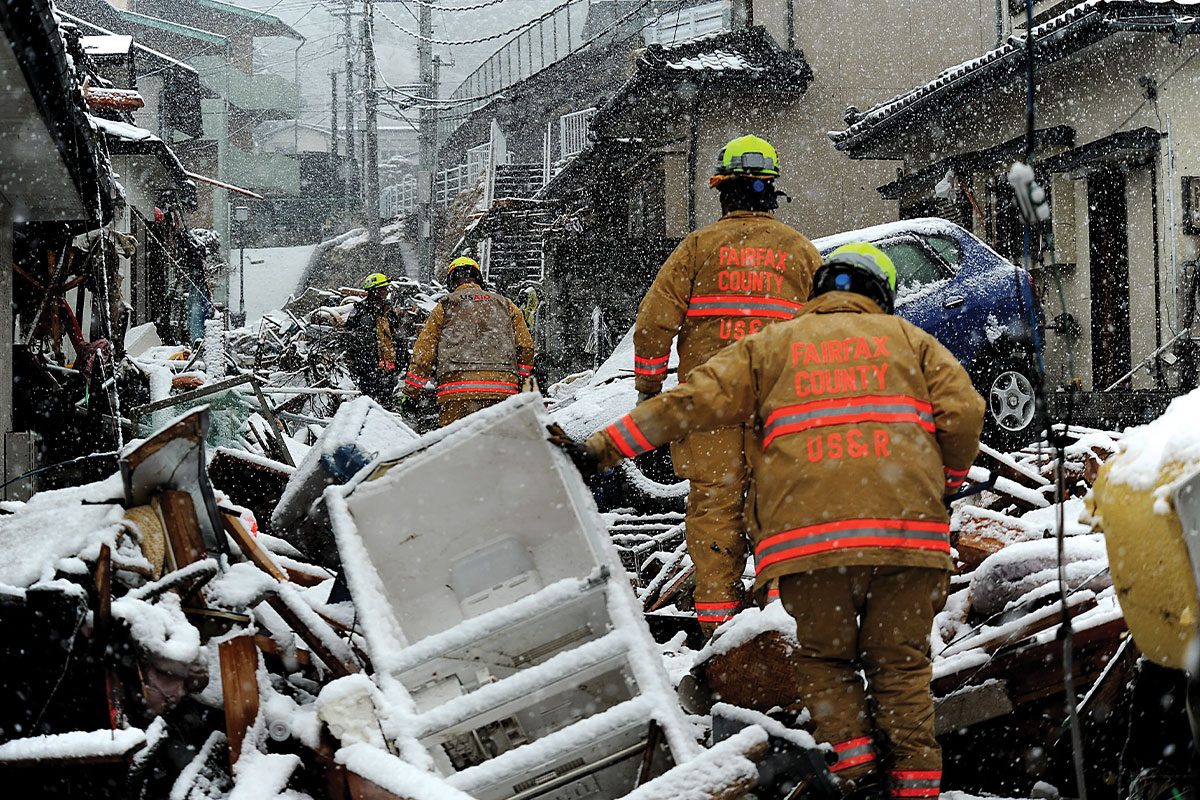
“One of the most humbling deployments was to Japan in 2011,” says Thurston. “I was floored by the generous welcome we received. When our buses rolled in, the people lined the road with their heads bowed in respect, just because we were there. There wasn’t a lot of rescuing left for us to do, but at that moment, I realized our arrival represented more than USAR.”
He adds: “I’m a firm believer that when a fire truck rolls up, it delivers hope, and that’s what the USAR team does. We bring with us the power of hope. When humanity comes together to help others, with no strings or politics attached, it’s pretty remarkable what we can accomplish.”
This story originally ran in our June issue. For more stories like this, subscribe to Northern Virginia Magazine.

